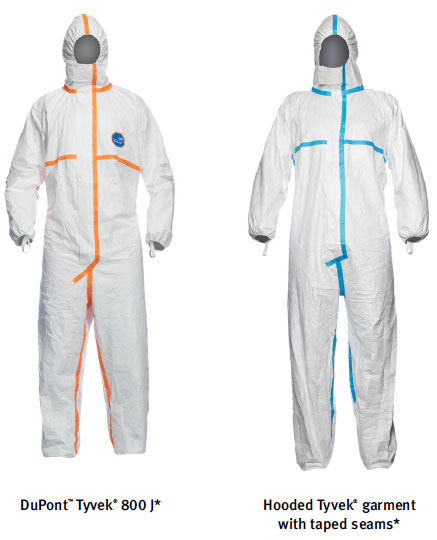Watch the video above: Too easy for healthcare workers to make a mistake when dealing with Ebola patients: Global medic

TORONTO – After news that a second healthcare worker who treated an Ebola patient in Dallas contracted the deadly disease, many questions have been raised, including how protective the protective gear is that is being used by healthcare workers.
These suits, often referred to as biohazard suits are a healthcare worker’s first defense against infection.
READ MORE: How did 2 U.S. health workers contract Ebola from infected patient?
DuPont has been collaborating with Médecins Sans Frontières (MSF), the World Health Organization (WHO) and other organizations in the development of protective gear in the effort to curb Ebola transmission.
The company told Global News that they have already tripled production of their suits.
But if these suits are the first defense, then why are healthcare workers getting infected?
First, there is the protection itself. It is recommended that healthcare workers wear gloves, a gown, eye protection and a face mask while treating a patient with Ebola. Doubling up on gloves as well as wearing shoe covers and leg coverings are also recommended.
But the DuPont suits are like the armour against Ebola. They are full-body zip-up suits that are said to protect against blood and body fluids, blood-borne pathogens as well as a “resistance to penetration by biologically contaminated liquids…liquid aerosols…solid particles.”
READ MORE: ‘Nurses are telling us they’re not ready’: union on Ebola preparedness in Canada
- Canadian man dies during Texas Ironman event. His widow wants answers as to why
- ‘Sciatica was gone’: hospital performs robot-assisted spinal surgery in Canadian first
- Canadians more likely to eat food past best-before date. What are the risks?
- Treatment from female doctors leads to lower death rates, study finds
The key to any protection, however, lies with human error.
If a healthcare worker doesn’t put on a suit properly, or — more importantly — remove it according to guidelines provided by the Centers for Disease Control in Atlanta, Georgia, as well as the WHO, they put themselves at great risk.
Rahul Singh from Global Medic, told Global News’ Sean Mallen that it’s essential that these instructions are closely followed.
“They’re protocols for how you put your equipment on, but more importantly, how you take your equipment off. Because when you take your equipment off, it’s just so easy to touch with the outer part of your glove against your skin when you’re removing something.
“And if you don’t follow that protocol to a T, you’re going to get contaminated.”
Dr. Joel Kettner from the medical director of the International Centre for Infectious Diseases in Winnipeg, Manitoba, agrees.
“Specific keys to reducing transmission include appropriate equipment that is properly put on and taken off, safe handling needles and other sharp instruments, and avoidance of touching of the eyes, nose and mouth before washing of the hands or other specific washing with 70 per cent alcohol or soap immediately after removal (and appropriate disposal) of personal protective equipment,” Kettner said.
He said that a “buddy” system is also recommended.
But it’s unclear if the healthcare workers in Dallas, or those in countries battling Ebola followed those procedures.
In Toronto, the University Health Network, home to Toronto General where one patient was tested — and found to be free of the virus — healthcare workers are being trained to properly put on and remove worn gear while treating patients.
“We are using N-95 masks with face shields and goggles under the shield,” said UHN public affairs and communications officer Ana Gajic. “We are using two pairs of gloves (a third pair is optional) and the training is about putting on the equipment with head covers, booties, full body protection and then removing all of this equipment without cross-contamination, which is about taking equipment off while inverting it so that nothing external touches the staff member’s body.”
But a recent commentary posted on the University of Minnesota’s Center for Infectious Disease Research and Policy says that health-care workers really need to be wearing a respirator if they want to ensure thorough protection.
“The minimum level of protection in high-risk settings should be a respirator with an assigned protection factor greater than 10. A powered air-purifying respirator (PAPR) with a hood or helmet offers many advantages over an N95 filtering facepiece or similar respirator, being more protective, comfortable, and cost-effective in the long run,” the commentary reads.
Many nurses feel that Canada isn’t prepared.
“We’re ready on paper, but we’re not ready in practice,” said Canadian Federation of Nurses Unions president Linda Silas. “What our nurses are saying is that they are not fit-tested for the equipment yet, they don’t know how to put it on.”
And that’s a problem.
“I think we need to reevaluate some of these protocols to make it easier, and better and more intuitive for healthcare workers…that’s like managing any crisis,” Singh said.








Comments